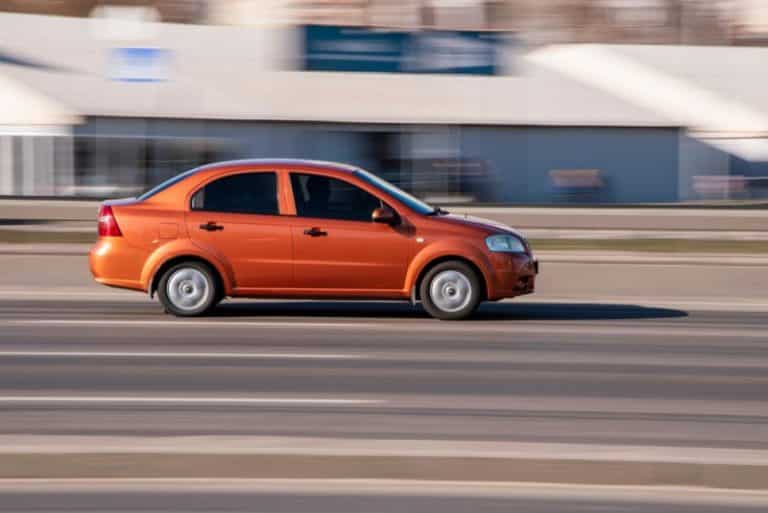Chevy Lane Departure Warning Not Working? (Reasons & Solutions)
Lane departure warning systems keep your vehicle within its driving lane limits to avoid collision with moving cars from opposite lanes.
Certain factors may hinder its function and accuracy.
Also, insufficient knowledge of how your lane departure system works can cause panicking during technically normal conditions that don’t necessarily warrant the system’s warning.
Therefore, this article’s thorough understanding will help you know if and why your Chevy lane departure warning isn’t working.
Lane departure warning systems may not work due to various reasons including poor visibility, bad weather conditions, and an unachieved speed triggering limit. You can address this by keeping the area of the windshield where the camera is set, clean at all times, and temporarily switching off your lane departure warning system while driving through off-road or bad weather conditions.
What Could Cause A Chevy Lane Departure Warning to Malfunction?
A chevy lane assists feature is an automated system.
Thus, when a single component fails to function properly either due to mechanical or environmental reasons, the entire system is sure to malfunction.
Consider a few reasons why your Chevy lane departure warning may not function and see how you can tackle them.
#1. Poor visibility
The system makes use of a front-facing sensor camera mounted behind Chevy’s windshield inside the back-view mirror to detect lane markings and alert the driver when the car tilts out of its lane.
The lane departure warning system doesn’t recognize curbs and won’t flag the vehicle if it slips into the pavement.
For the sensor camera to function correctly, the surface at the top end of the windshield, where the camera projects from, must be cleaned regularly.
Because of the nature of windshield wipers, dust accumulates at the intersection of the windshield, where the wipers don’t usually touch.
And since the camera is mounted at the top-middle corner of this dusty haze, the camera lenses cannot detect lane markings.
Also, while driving in front of a car when it is raining, the lane departure warning system may mistake tire tracks on the water from the vehicle in front as lane lines and unnecessarily beep or warn you.
You could temporarily switch off your lane departure warning system in cases like that. Or preferably, it is best to turn it off while driving through bad weather.
Another factor of poor visibility is damaged windshields. The lane departure warning system is an advanced driver assistance feature integrated with the car’s windshield.
A complex array of sensitive components like ultra Sonic radars and video sensors embedded in the windshield aid the camera in giving accurate visual readings.
When the windshield gets damaged, it affects the car’s visual alignment, causing the Lane departure warning system to give wrong readings or no reading.
Also, when raining, the camera cannot detect lane markings. And maybe prone to either wrong alerts or no alert at all.
The blur on the windshield from the downpour renders the safety system almost useless. This action is also the case during snowing or foggy weather conditions.
#2. Unachieved Activating Speed Limit
Another valid reason why your lane departure warning system may not work is that your vehicle hasn’t gotten to the feature activating speed limit.
The lane departure warning is activated at 35 miles per hour (mph) for some vehicles. Although, to be entirely sure, check the vehicle’s owner’s manual for your Chevy’s exact activating speed limit.
The lane departure warning system only activates at speed limits it senses as potentially life-threatening to the vehicle or the driver.
Another safety system that works in conjunction with the lane departure warning system is the Lanelane keep assist.
The Lanelane keep assist helps steer your vehicle back into its Lanelane when the lane departure warning system senses the vehicle slipping out of its Lanelane.
A lot of the time, lane departure warnings and lane keep assist systems work best while driving on the highway.
In some vehicles, lane departure warning and lane-keep assist are activated automatically once your car is turned on.
While for others, the driver has to manually set it into operation by pressing the safety system’s switch button.
The button comes with an indicator light to show when the system is activated. Ensure to check if your lane departure warning system is on before driving.
Or find out from the owner’s manual if the system is automated in your vehicle.
#3. Turn Signals or Sharp Maneuvers
The lane departure warning system does not function when the car’s trafficator signals a turn signal.
Turning signals mean the driver intentionally guides his vehicle towards that direction, so the lane departure warning system doesn’t need to bother alerting.
Also, the lane departure warning system doesn’t alert when a sudden driving maneuver is made.
Another important tip is that the lane departure warning system is not made for roads with sharp curves.
Since the front-facing camera only looks in front and covers solely detects lane markings within its view.
Therefore, when driving on curving roads or roundabouts, the lane departure warning system may find it difficult to detect lane markings.
The driver’s attention should be hyper-focused and alert while making bends on curved roads, as there would most likely be no assistance from the lane departure warning system.
An example where the lane departure warning system highlights its difficulty in the correct warning is when navigating a curve on a 3-lane highway.
While the vehicle is driving through the middle of the 3-lane highway, the forward-facing camera may not detect lane markings on the lefthand side of the road as its vision is solely projected forward.
It would indicate that the vehicle is too close to the right Lanelane due to its proximity to the car even though the vehicle was still in the middle lane.
In all situations, it is best to not rely heavily on the lane departure warning system but rather be vigilant and aware of the surroundings and traffic in one’s Lanelane.
#4. Driving Terrains
The lane departure warning system doesn’t function when the vehicle is being driven on hilly, rough, or steep terrains.
Generally, the lane departure warning system doesn’t function on unpaved roads. Especially roads without visible lane markings.
Hilly or steep terrains also tend to slow down the vehicle, making the lane departure warning system activating the speed limit unfeasible.
Also, the lane departure warning system doesn’t alert the vehicle when near pedestrians, bicyclists, or road objects.
It is prone to being overly sensitive and may cause discomfort and annoyance to the driver while driving through these areas.
As real-life driving concessions that might need to be made by the driver, such as switching lanes due to irregular movements from pedestrians, cyclists, etc., would still be flagged.
Therefore, you should take care while driving through congested or populated areas.
Even though the car remains within lane limits, the lane departure warning system and Lanelane keep assist systems are working effectively.
Furthermore, the effectiveness of the lane departure warning system is seriously reduced during bad weather conditions that make lane markings less visible.
Rainy, snowing, and foggy weather conditions mainly affect the lane departure warning system’s effectiveness in these terrains.
Also Read: Does Chevrolet Aveo Have ISOFIX? (Things You Must Know)
How Can Lane Keep Assist with Lane Departure Warning Help You?
Conclusion
In summary, lane departure warning systems solely use lane markings to guide Drivers when the car drifts into other lanes.
Poor visibility due to dirt build-up or weather conditions, unachieved activating speed limit, and sharp evasive steering maneuvers are among factors that hinder its effectiveness.
Also, lane departure warning systems are inoperable while turn signals are switched on.





